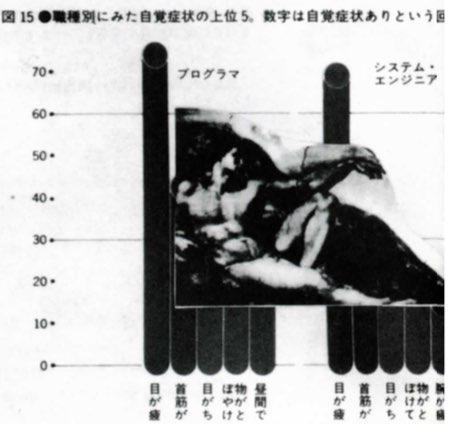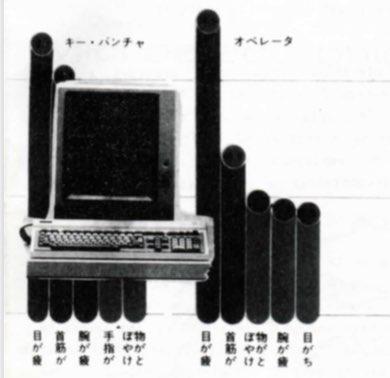Demystifying
OPENING ADDRESS ,
By Ursula Huws
New technology is popularly presented in a peculiarly mystifying way. It is marvellous , exciting , incomprehensible - magic. It is in vented by terribly clever scientists, men in white coats who are, of course, completely dedicated to the pursuit of knowledge and above such things as politics . And its force is unstoppable. New Technology is part of Progress, and to question it is unthinkable.
As women, most of us have. not been trained to understand machines, so we are especially vulnerable to ideas like these, and hesitant about challenging them.
If there is one thing that this conference achieves, I hope that it is this: to develop our understanding and our confidence that technological development is not an abstract, im partial, inevitable force. It is the result of a series of specific decisions made by particular groups of people in particular places at particular times for their own purposes.To understand any specific process or product, we must ask. Who developed it and why, and in whose interest? Why has this moment been chosen to introduce it? Who stands to gain, and who to lose?
Questions like these will shape many of our discussions over the next two days. Now, I should just like to sketch in some of the background to the present wave of technological change, which has prompted the calling of this conference, the context in which the so-called micro electronic revolution is taking place.
Firstly, it is being introduced during a major world recession. I believe that it can only be understood as an integral part of the economic upheaval which is taking place. New technology is capital's way of restorng profitability, by a massive shake-out of labour, increased productivity, and the development of new products for new markets. High unemployment also minimises the resistance of workers to these changes.
The effects of the recession on women are acute and contradictory. On the one hand, the need for an independent source of income is increased, due to lower living standards, high prices and male unemployment. On the other, women's right to work is delegitimised by ideological pressures to get back to the home, a move which is reinforced by the withdrawal of welfare facilities.

Secondly, we should map out the contours of the fields of employment into which new technology is being introduced. Throughout the world, we find highly segregated labour markets with deep racial and sexual divisions. Generally speaking women are to be found in the most menial and repetitive jobs, classified as unskilled and characterised by low pay and in security. The more unpleasant and badly paid these jobs are, the more likely they are to be held by Black, Asian, Amerindian or Latin American women. We must not forget, too, that it is women who do the bulk of the world's unpaid work - the care of children and animals, the growing, buying, cooking and serving of food, the making and mending and washing of clothes and bedding, the cleaning, and the nursing of the sick and elderly
How is new technology affecting these patterns of work?.
Firstly, some jobs are simply automated out of existence. In most cases, the jobs which are easiest and most profitable to automate are those which are repetitive and labour-intensive, and in practice this generally means women's jobs. In offices, it is the clerical work; in factories, the routine assembly and packing work. Thus we are seeing chocolates sorters being replaced by robots, stock- keeping clerks displaced by electronic point-of- saleterminals in shops, bank cashiers ousted by automatic telling machines, and typist squad rupling their efficiency through the use of word processors.
New technology also has drastic effects on skills. Some skills become redundant or incorporated into the machines; new skills are created. A dual process of deskilling / hyperskilling can be identified. The majority of workers at the bottom of the work hierarchy are deskilled and become subject to machine pacing and control in their work, while a few highly skilled and creative jobs, designing and managing the new work system, are created at the top. While women are often to be found in the first category, the second has up to now been almost exclusively male.
Sometimes, the jobs which are deskilled are those which have traditionally been the preserve of men, the "crafts" which generations of white men have organised as enclaves of high pay and relative privilege. New technology can be the means for opening these areas up to women, but this is happening at precisely the moment when they are losing their advantages and becoming low-status, low-paid routine jobs. Far from creating genuine new opportunities for women, these technologies seem simply to provide employers with a chance of exploiting the sexual divisions in the work force and using women to undercut the gains made by men in the past.

A third effect of new technology is to bring about radical changes in the international division of labour. It increases the power and relative advantage of transnational corporations and eases international communications. Put this to get her with the cheapness, lightness and smallness of microelectronic components and the low skill levels now required ' to make, assemble and operate the new machines and you have a situation where it is possible to switch production anywhere in the world where labour is cheap and conditions seem suitable. Over the past few years we have witnessed the development of the global production line in several industries, notably electronics, textiles and clothing, with different stages of the process being carried out literally all over the world. Characteristically , the labour- intensive stages of production take place in "Free Enterprise Zones" in various Third World countries, using the labour of teenage girls, who work in appalling conditions for long hours and rock-bottom wages which are sometimes actually below the cost of subsistence. Some of the most sophisticated techniques known to patriarchy are used to keep these workers subdued, supported, when all else fails, by state violence. However, there are reports that some women are with standing this battery, and fighting back.
It is not just the production industries which scour the world for the cheapest and most docile source of labour. There is now evidence that service industries in the developed countries are moving off shore for their information processing work. Using satellite technology, routine tasks such as data entry, database management and coding can be beamed back to New York, San Francisco or Sidney from India, Singapore or the West Indies for afracton of the cost of employing indigenous workers. This international division of labour can become a means for setting the women of one country against their sisters elsewhere, producing, for instance, demands to control imports. On the other hand, it can also become a powerful means of building links between women around the world, and recognising our common interests, and common oppresion.
Besides enabling employers to relocate employment around the world, new technology can also bring changes in work location within a country offices, increasing casualisation and the isolation of workers.
A final way in which new technology alters work patterns, and one which profoundly affects women, is by changing the boundaries between paid and unpaid work. By creating new ways in which services can become "self-service", it not only destroys the jobs of service workers but also adds to the unpaid burden of consumption work which all women have to shoulder. As consumers, women tend to be particularly isolated, and also particularly receptive to any new product which promises to liberat e us from housework. However, the evidence is that, although new technology has lightened and deskilled many domestic tasks, it has not resulted in any decrease in the amount of time spent on domestic labour. Instead it - appears to have trapped women ever more firmly into a dependence on consumer products, and the wage which is necessary for their purchase and upkeep. In effect, for many of us, particularly women with children who cannot take on full- time waged work, this has in practice simply
meant increased economic dependence on men.

In Japan now there are factories run almost entirely by robots. Some of these robots can produce other robots and construction equipment themselves. All day and all year around these robots are working ceaselessly - under endlessly burning lights, machines making machines. The mere thought of it makes me feel very ill at ease. There is on record one case of a night worker being found the next morning by his fellow workers, crushed at the hands of the robots. Offices are now beginning to experience the "office automation revolution" where middle-aged employees are laid off or are means a decrease in the amount of skilled labour, that jobs become more and more boring, and that control of workers becomes more strict. Working conditions are ignored to such a degree that employees are becoming ill as a result of their work more frequently than ever before. A new "worker's syndrome" illnessis emerging.
The micro-electronics revolution provides a very different system from that of the former labour-cost saving one. It increases the level of unskilled work, makes existing standards of craft personship lower, and means that employers can benefit from a worker's reduced circumstances- for example, employment costs.
This brings me to the last question I should like to address: the different relations of men and women to technology. I expect that some of you feel that up to now I have been unduly pessimistic, and failed to take account of the many positive uses which women might be able to make of computer technology. I know that some of the most exciting- looking workshops at this conference will be devoted to exploring some of might be able to make of computer technology. I know that some of the most exciting- looking workshops will devoted to exploring some of these possibilities, and I look forward to them. One of the most fascinating aspects of any new technology is the contradictory nature of its effects and the way it can often be used to subvert precisely those objectives which it was set up to achieve. However, I think we must be realistic about what we are up against. Despite the fact that it was a woman, Ida Babbage, who was largely responsible for developing the first computer, we are talking about a technology over-whelmingly designed for men by men, for purposes from which most women feel profoundly alienated. Let us not forget that it was the US defense spending programme which funded the development of the microprocessor and that a large chunk finding ever more sophisticated ways of killing people.

